
DIY: How to Change the Engine Oil on an Air-cooled Porsche 911
Here is a quick and painless way to perform your own oil change on your classic air-cooled Porsche 911.
Note: The following information is for educational use only. Before proceeding please read my disclaimer page.
Disclosure: This post contains links to Amazon products and other trusted vendors. As an Amazon Associate I earn from qualifying purchases.
The air-cooled Porsche 911 is actually an oil-cooled machine. The large cooling fan blows air over the cylinders and heads to provide some convective exterior air-cooling but a big portion of the overall cooling comes from the large quantity of oil circulating through the engine’s dry sump system. This oil capacity can range from 8-14 quarts throughout the years. All years of air-cooled 911 are dry-sump and keep some oil at the bottom of the engine case but mostly stored in a separate remote oil tank. This means that there are not one but two oil drain plugs that need to be removed to allow the engine to drain completely.
Save some money for the big repairs by changing the oil yourself using this procedure.
Model Years Applicable:
All Porsche 911 models up to 1989.
Tools Needed:
- 15mm or 19mm wrench or socket
- Torque wrench (if using socket)
- Oil filter wrench
- Shop rags or paper towels
- 1-2 oil drain pans or bucket capable of holding 12 quarts total
- Heavy rubber gloves to protect against hot oil (highly recommended)
Parts Needed:
- 12 quarts of engine oil (see note below regarding oil selection)
- 1 oil filter
- 2 oil drain plug sealing rings
- 2 oil strainer/drain plate gaskets (if the drain plate is removed)
Note: Engine oil is a huge rabbit hole of a topic due to the unique requirements of air-cooled engines. Many variables affect its selection such as operating climate, engine mileage, modifications, and the kind of driving the engine will see. This procedure will only cover the oil change process and not make oil recommendations. For that information please consult your owner’s manual, local Porsche dealer, or independent Porsche specialist.
Procedure
Step 1: Drain Oil Tank
Start the engine and get it up to operating temperature. On most cars there is a front oil cooler and several meters of oil piping that need to be drained. Warming up the engine will make sure the front oil thermostat is open, allowing all oil in the front oil cooling circuit and all oil debris to get flushed out. We will be draining the oil tank first, which will contain most of the engine oil. Because the oil will be hot and drain very rapidly, make sure you have a drain container with a large opening that will hold at least 9 quarts. This way you avoid a hot oily mess that could possibly burn your skin. It is highly recommended that you wear heavy rubber gloves and arm sleeves.
Every Porsche 911, 1989 and below (with the exception of 1972) has the oil tank located to the right of the engine behind the rear right wheel. 1972 911s have their oil tank to the right of the engine but just ahead of the rear right wheel. The drain plug will be at the very bottom of the oil tank for all years.
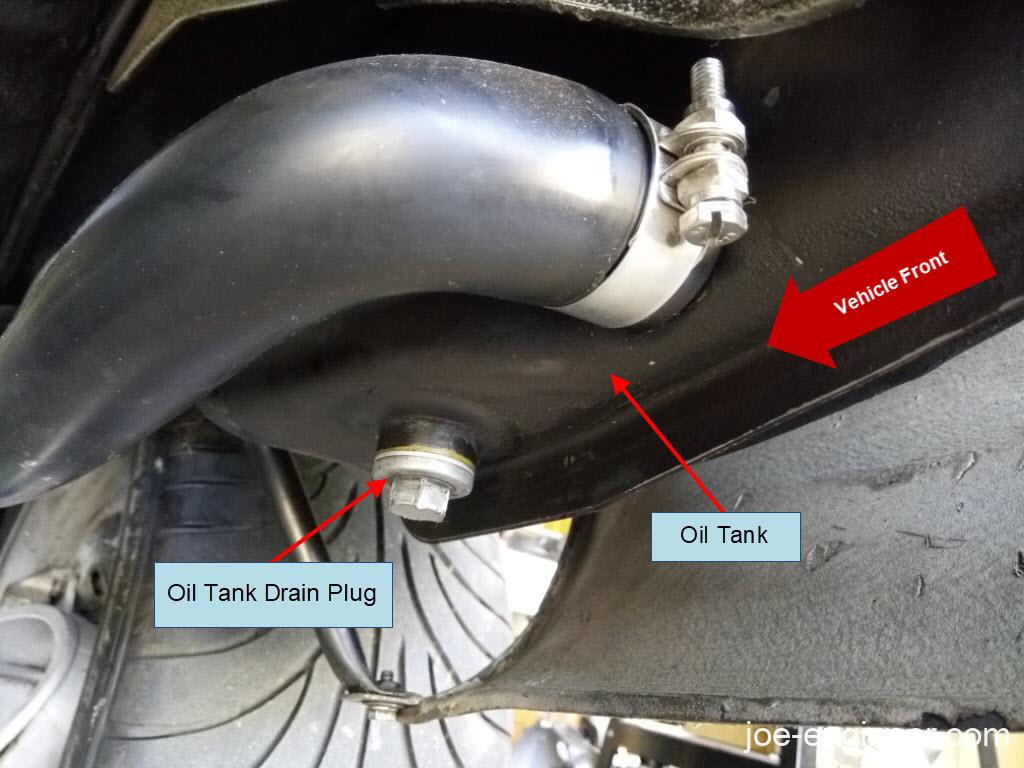
After placing the oil drain container under the drain plug, slowly remove the plug and let the tank oil drain out completely.
Step 2: Remove Oil Filter
With the oil drain container still under the oil tank, remove the oil filter located in the engine compartment on the right side.
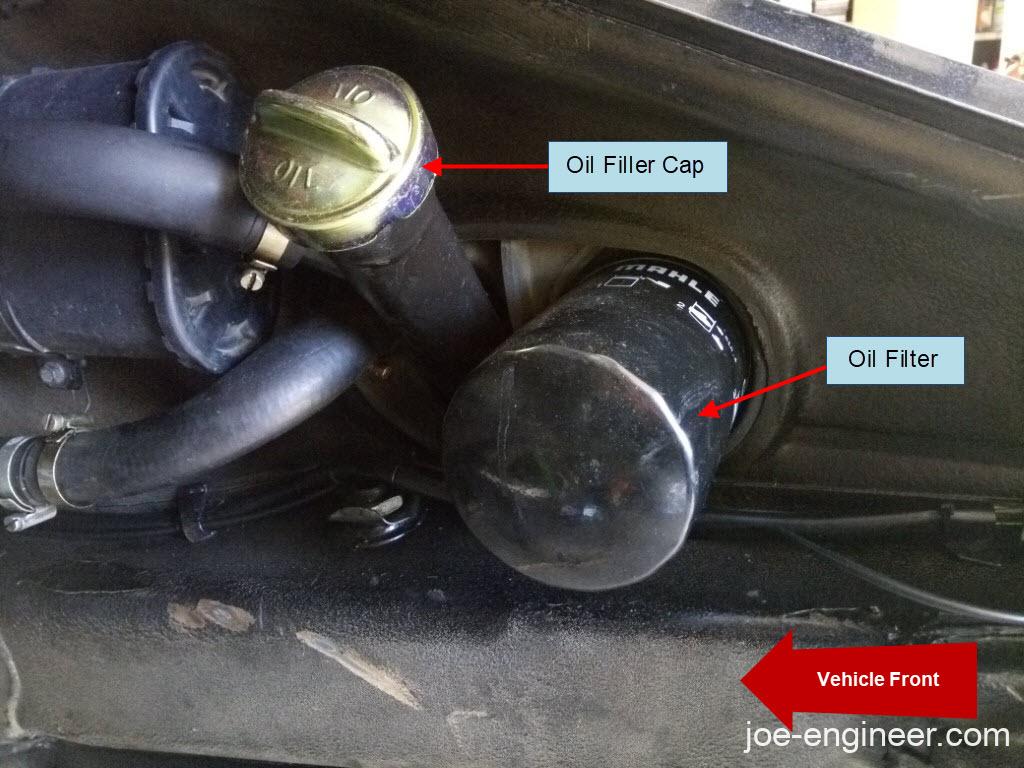
It should come off by hand but if it is too tight, use an oil filter wrench. Some oil may spill out so keep a rag or paper towels handy. Some of the filter oil may continue to drain out the bottom of the oil tank.
Step 3: Drain Engine Case
Place a second oil drain container under the drain plate at the bottom of the engine case. All 911s up to early 1983 had the engine case drain plug in the drain plate. After early 1983 the drain plug is located on the left side of the engine case, right next to the drain plate. Remove the drain plug and let the engine case drain out completely.
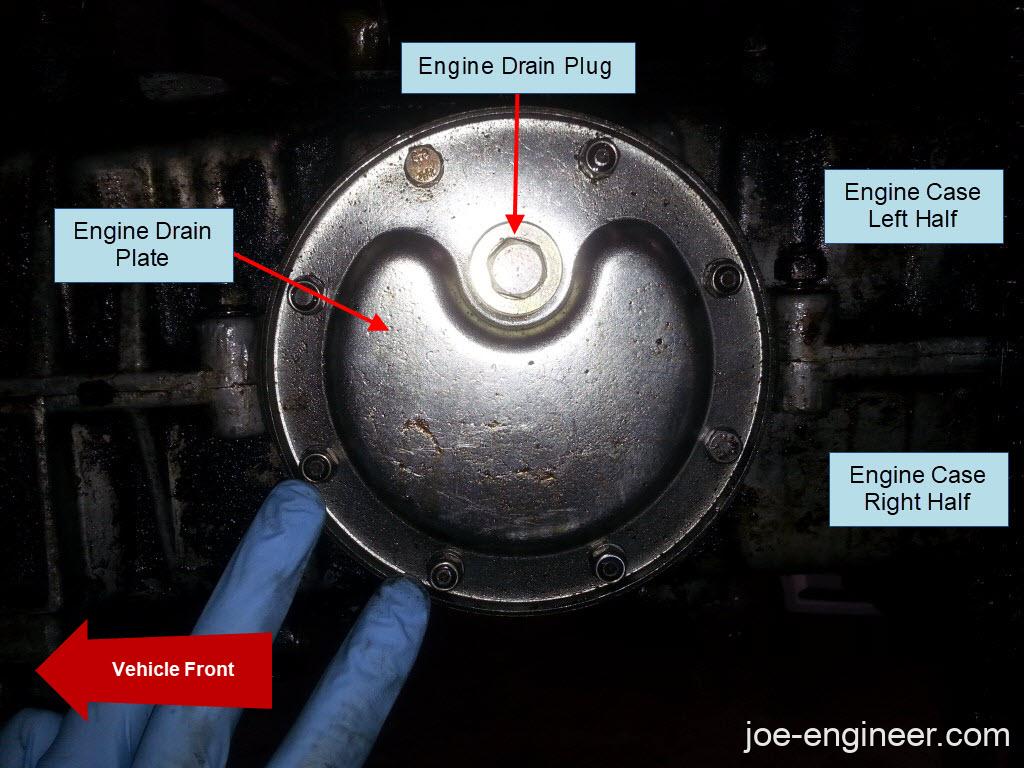
You will notice that much less oil will drain out of the engine than the oil tank but it still drains very quickly. Underneath the drain plate is an oil strainer screen that should be inspected and cleaned of debris occasionally although not necessarily with every oil change. If you do remove the drain plate, replace the 2 plate and strainer gaskets and make sure the oil drain plug is not installed directly over the oil pump pickup tube to avoid oil starvation issues. Torque the small plate nuts very gently to no more than 11 N-m (8.1 ft-lbs).
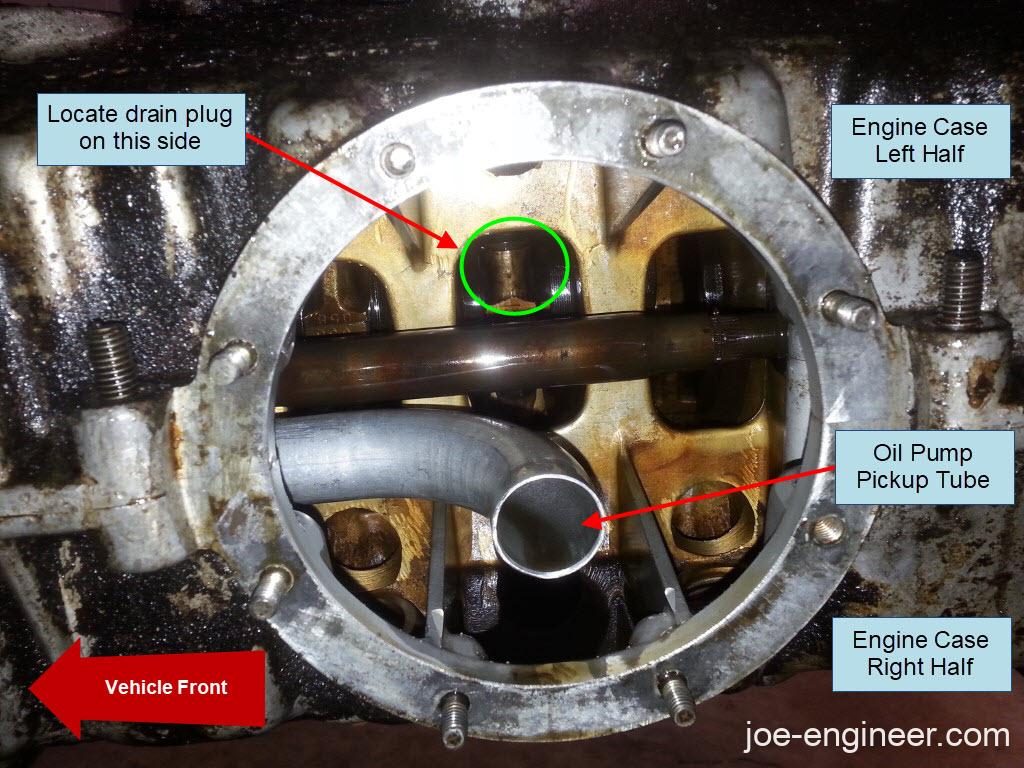
Step 4: Replace Oil Filter and Plug Gaskets
Once all the oil is drained, take a new oil filter and smear some engine oil on the filter gasket to lube it. Spin on the filter and tighten it hand-tight. Inspect each oil drain plug for any metal debris and wipe clean. The factory engine oil drain plug is magnetic and the factory oil tank one is not, but can be upgraded to the magnetic version to catch more metal debris. Replace each respective oil drain plug back into the engine case and oil tank with new oil plug gaskets to prevent oil leaks. Torque both plugs to 42 Nm (30.8 ft-lbs). Recycle or dispose of used oil and filters in accordance with your local regulations.
Step 5: Refill Oil with Minimum Quantity to Start Engine
All 911s 1989 and earlier have the oil filler cap at the top of the oil tank located inside the engine compartment underneath the right rear fender, except 1972, which has an external oil filler door located outside the right rear fender.
Remove the oil filler cap and you will find the oil dipstick. Pull out the dipstick so you don’t get oil all over it while you are filling with new oil.
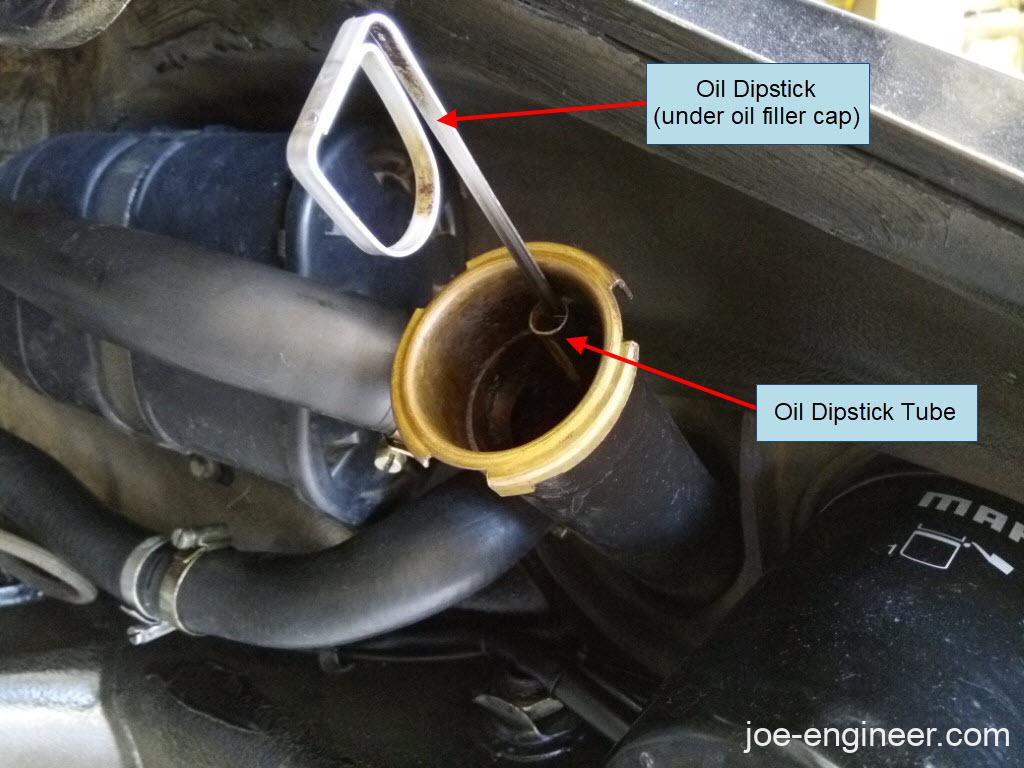
On 1972 and earlier 911s slowly add 8 quarts of new engine oil. On 1973 and later 911s add 9 quarts. Keep a rag or paper towels on hand to catch any spills around the filler. When you are finished, wipe the dipstick clean, put it back in the oil filler in its dipstick tube. Make sure it is inserted in the dipstick tube otherwise it could fall into the oil tank. Then replace the oil filler cap.
Step 6: Run Engine and Top-Off Oil
Start the engine and bring it up to normal operating temperature. If you take it for a short drive to warm it up, park it on a flat level surface and leave it running. After idling for a few minutes, remove the oil cap and check the oil level on the dipstick with the engine still running. If the oil level seems low, slowly add oil to the running engine and check the dipstick again. A rule of thumb is that 2 quarts of oil will change the oil level from the low mark on the dipstick to the high mark, so fill it very slowly to avoid overfilling. If you overfill the oil it can cause all kinds of problems such as oil leaks in the engine compartment, damaged catalytic converters, or heavy deposits inside the engine. A safe target is to maintain hot oil levels in between the two dipstick lines at all times.
Note: The oil level can only be checked accurately using the dipstick, when the engine is at operating temperature, running, and idling. The dash oil gauge is only a reference.
Your engine is now ready to put down the miles until the next oil change interval.
If you want to see this whole process in a video, here you go: